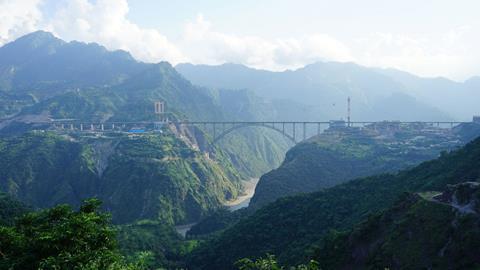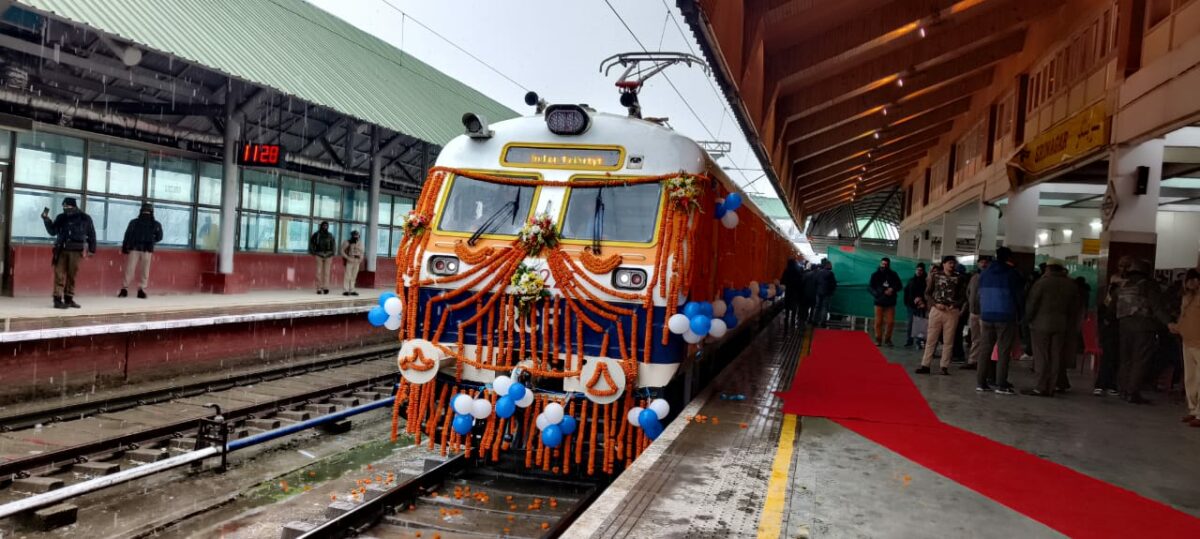The Kashmir Rail Link, an ambitious project aimed at connecting Jammu and Srinagar via rail, has moved closer to reality with the Commissioner of Railway Safety (CRS) approving the final 17-km Katra-Reasi section. This approval marks a significant milestone in the Udhampur-Srinagar-Baramulla Rail Link (USBRL) project, which has been under construction since its sanctioning in 1994-95.
CRS Greenlights Katra-Reasi Section
The CRS, an independent safety audit body under the Ministry of Civil Aviation, inspected the Katra-Reasi section and granted its approval for train operations. Trains on this route will run at a maximum speed of 85 km/h, with loop lines at stations cleared for 15 km/h. Due to security concerns, train services on this stretch will initially operate only during the day.
Railway ministry officials have confirmed preparations to deploy Vande Bharat trains, Diesel Electric Multiple Units (DEMU), and Mainline Electric Multiple Units (MEMU) between Jammu and Srinagar. This development paves the way for faster and more reliable connectivity in the region.

Milestones Of The USBRL Project
The USBRL project has been a monumental engineering endeavor. The first three phases were completed by 2014, connecting Banihal to Baramulla in the Kashmir Valley and Jammu to Katra in the Jammu region. However, the 111-km stretch from Katra to Banihal posed significant challenges due to the region’s complex geology.
The project’s toughest segments include:
- Banihal to Sangaldan (48 km): Commissioned in February 2024.
- Sangaldan to Reasi (46 km): CRS approval granted on July 1, 2024.
- Katra to Reasi (17 km): The final leg, now cleared for operations.
Engineering Marvels Of The Project
The Katra-Banihal section includes some of the most remarkable engineering feats in India’s rail history:
- Chenab Bridge: Standing 359 meters high, it is the world’s tallest railway arch bridge. Its foundation was supported by 30,000 tonnes of steel using a rock-bolting method.
- Anji River Bridge: India’s first cable-stayed railway bridge.
- T50 Tunnel: Spanning 12.77 km, it is the longest tunnel in the project.
Additionally, the section contains 97 km of tunnels and 7 km of bridges. For operational safety, cameras have been installed every 50 meters inside the tunnels.

Vande Bharat’s Historic Debut In Kashmir
The first train to run on the newly approved section will be an eight-coach Vande Bharat Express, specifically designed to operate in extreme temperatures as low as -20°C. This train promises faster travel times and modern amenities, marking a new era for rail connectivity in the region.
Infrastructure And Connectivity Boost
The USBRL project has also led to the development of over 215 km of roads to access construction sites, significantly improving infrastructure in remote areas. This rail link is expected to boost tourism, facilitate trade, and enhance overall connectivity in Jammu and Kashmir.
Challenges Overcome
The project faced numerous challenges, including:
- Difficult terrain requiring innovative engineering solutions.
- Building structures like the Chenab and Anji bridges, which demanded cutting-edge technology.
- Security concerns, necessitating robust surveillance systems and restricted operations.
Impact On The Region
Once operational, the Kashmir Rail Link will revolutionize transportation in the region, making travel between Jammu and Srinagar seamless and efficient. The enhanced connectivity is anticipated to:
- Boost economic activity by facilitating easier movement of goods and people.
- Attract more tourists to the scenic Kashmir Valley.
- Strengthen national integration by linking the region with the rest of the country.
Looking Ahead
With the CRS approval for the Katra-Reasi section, the long-awaited dream of a rail connection to Kashmir is set to become a reality. The USBRL project, which has overcome numerous hurdles over the decades, stands as a testament to India’s engineering prowess and commitment to inclusive development. The first Vande Bharat train on this route will not only be a milestone for the region but also a symbol of progress and connectivity for the entire nation.

